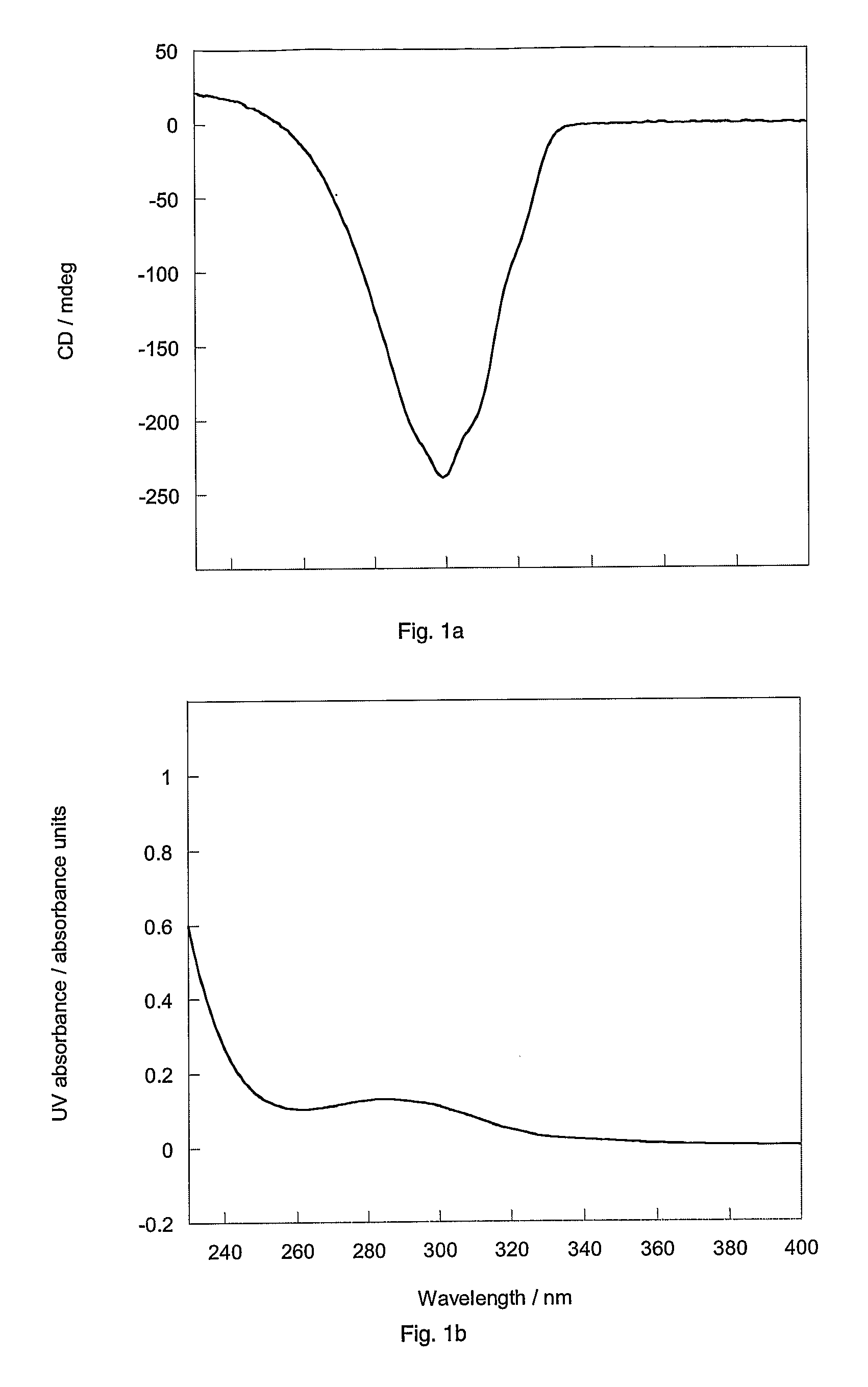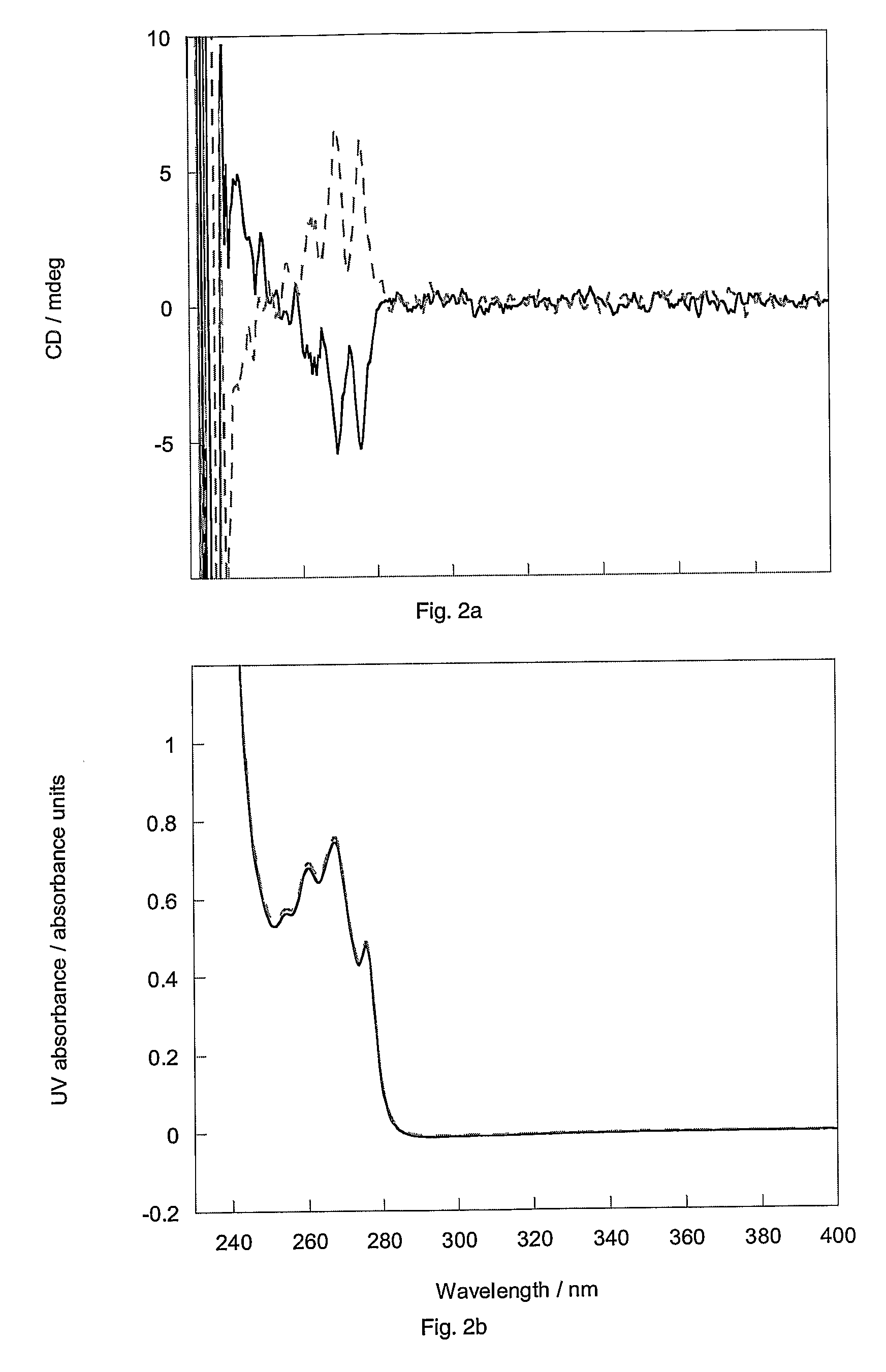Ep2 Receptor Agonists
a technology of ep2 receptor and agonist, which is applied in the field of ep2 receptor agonists, can solve the problems of inability to separate these stereoisomers on a preparative scale, and failure to achieve initial attempts to separate them
- Summary
- Abstract
- Description
- Claims
- Application Information
AI Technical Summary
Benefits of technology
Problems solved by technology
Method used
Image
Examples
example 1
Synthesis of Two Mixtures Each Containing 4 Stereoisomers of Methyl Esters of AH13205
(a) (i) Synthesis of 1-(4-bromophenyl)hexan-1-one (1)
[0157]
[0158]To a stirred ice-cooled mixture of AlCl3 (83 g) and bromobenzene (200 mL) under nitrogen was added dropwise hexanoylchloride (75 mL) over a period of 30 minutes. The mixture was then heated to 80° C. (external) for 1.5 hours, after which time the solution had turned a deep red. The mixture was then allowed to cool before being poured into 600 mL ice water and then extracted with DCM (800 mL). The organic extracts were then washed with brine, dried (MgSO4) and concentrated in vacuo. The concentrate was then treated with iso-hexane (1 L) and left in the freezer overnight, wherein crystallization took place. The slightly off-white solid was filtered and washed with more cold hexane, to yield the title compound (84 g). Shown to be adequately pure by nmr and tlc. 1H NMR (CDCl3, δ): 0.95 (3H, t); 1.4 (4H, m); 1.75 (2H, m); 2.95 (2H, t); 7.6 ...
example 2
Separation of trans-2-[4-(1-hydroxyhexyl)phenyl]-5-oxo-cyclopentaneheptanoic acid methyl ester diastereomers
[0209]HPLC of a 90 mg sample of either ester mixture 1 or 2 on a chiral stationary phase (ChiralPak AD, Daicel Chemical Industries, Japan) using a mobile phase of 100% ethanol afforded complete separation on a column of 25 cm in length by 2 cm internal diameter, in about an hour. A 1 g sample of either mixture was separated in eleven consecutive 90 mg runs (flow rate 4 ml / min; detection 230 nm). The recovered esters were then hydrolysed to the acids as follows. Methyl ester (0.45 g) in 4:1 v / v tetrahydrofuran in water (40 ml) was treated with 1M lithium hydroxide in water (1.37 ml, 1.2 equiv.) added dropwise and the solution was stirred overnight at ambient temperature. The solution was concentrated in vacuo, diluted with water, acidified to pH˜1 and extracted into ethyl acetate. The extract was dried over magnesium sulphate, filtered and concentrated in vacuo at 30° C. to giv...
example 3
Hydrolysis of Separated Methyl Esters
[0217]0.45 g of a methyl ester (as separated in Example 2) was dissolved in 40 ml of a 4:1 v / v solution of THF in water; 1.37 ml of 1M lithium hydroxide solution (1.2 equiv.) was added dropwise, and the solution then stirred overnight at ambient temperature. The reaction was then examined by LC-MS, which typically showed clean formation of the free acid, with only a trace of ester remaining. The reaction was concentrated down under vacuum to remove THF, and more water added; the stirred solution was treated dropwise with 1M hydrochloric acid to give pH˜1, and the solution then equilibrated with ethyl acetate; the aqueous layer was removed, and the ethyl acetate layer washed with brine, dried over magnesium sulphate, filtered, and evaporated under vacuum. The residual oil was transferred to a weighed vial in a little ethyl acetate, and solvent removed under a stream of nitrogen; the sample was then placed in a drying pistol and pumped on overnight...
PUM
| Property | Measurement | Unit |
|---|---|---|
| temperature | aaaaa | aaaaa |
| temperature | aaaaa | aaaaa |
| temperature | aaaaa | aaaaa |
Abstract
Description
Claims
Application Information
 Login to View More
Login to View More - R&D
- Intellectual Property
- Life Sciences
- Materials
- Tech Scout
- Unparalleled Data Quality
- Higher Quality Content
- 60% Fewer Hallucinations
Browse by: Latest US Patents, China's latest patents, Technical Efficacy Thesaurus, Application Domain, Technology Topic, Popular Technical Reports.
© 2025 PatSnap. All rights reserved.Legal|Privacy policy|Modern Slavery Act Transparency Statement|Sitemap|About US| Contact US: help@patsnap.com



